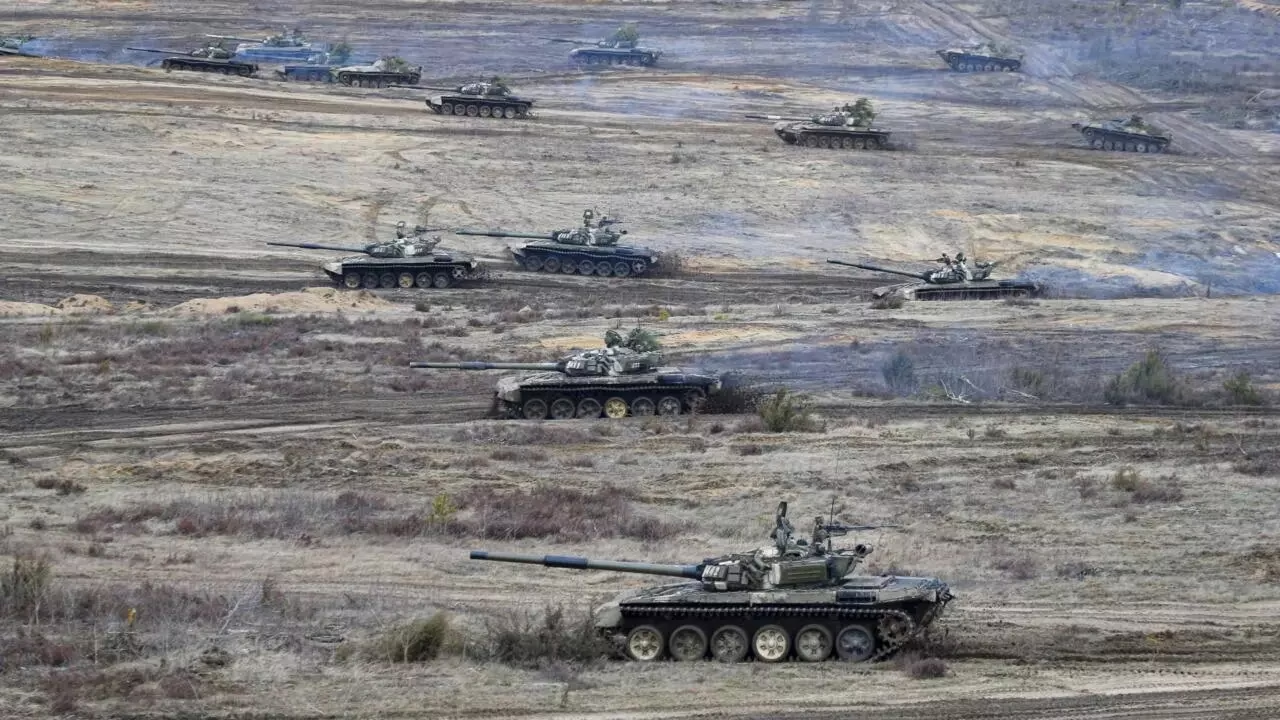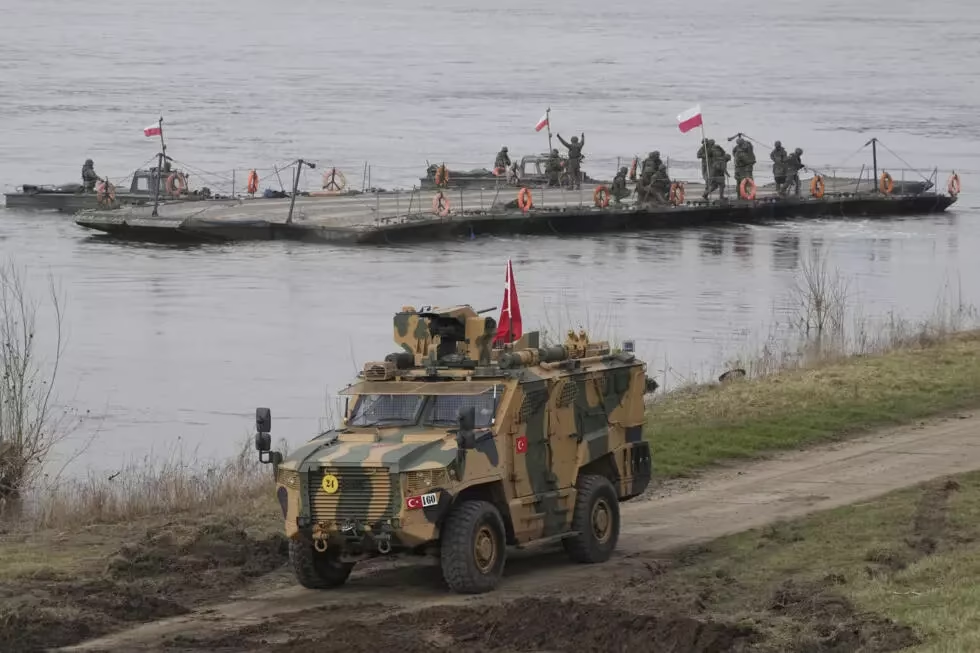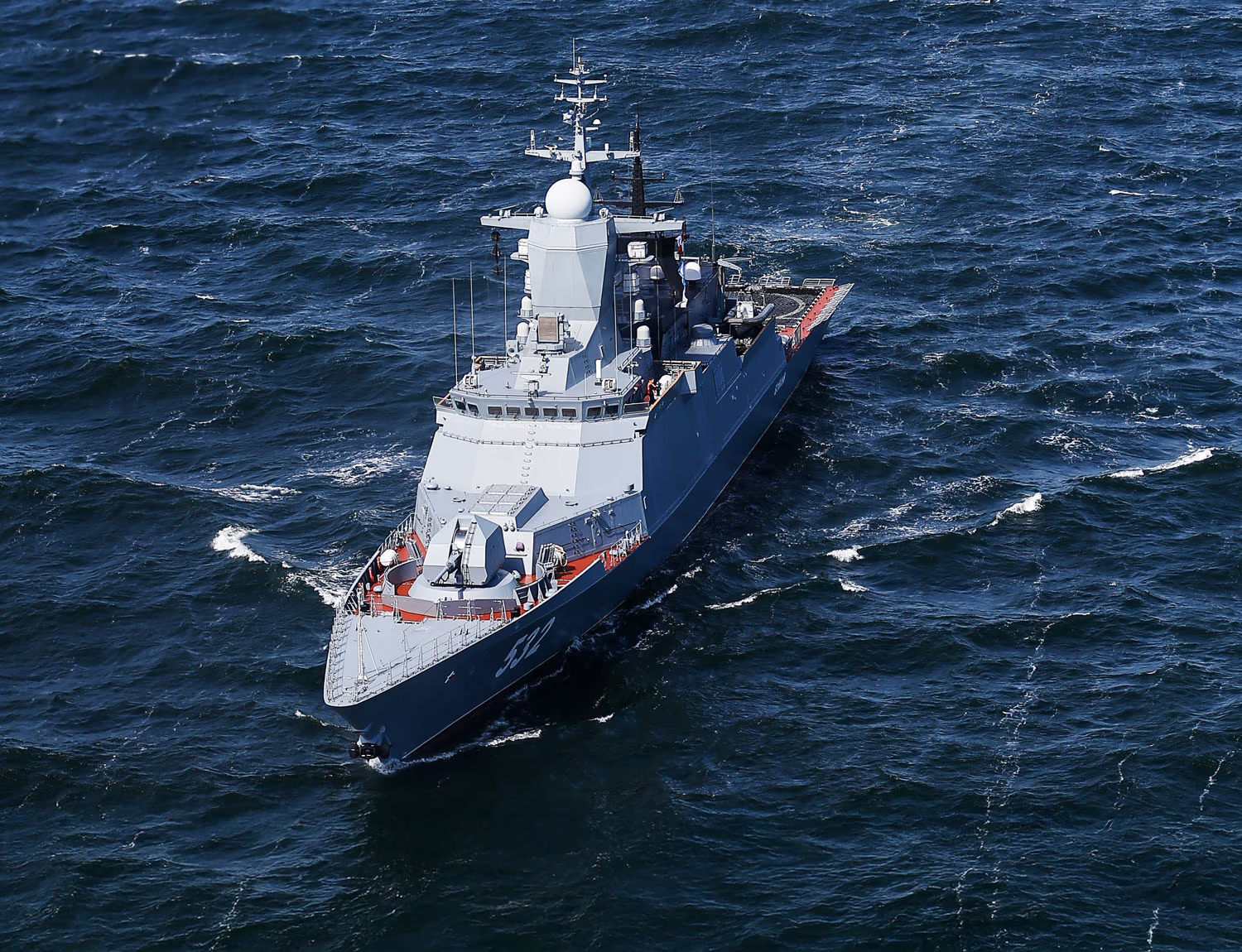Russian drones that violated Polish airspace have become a test for NATO. The alliance deployed multinational assets—from F-35 and F-16 fighters to Patriot air-defense systems—to intercept fewer than two dozen foam drones worth about $10,000 each. Only three were shot down, and despite attempts to present the operation as a success, NATO’s vulnerability was laid bare.
Europe’s attention is now fixed on the joint military exercises of Russia and Belarus, which begin on Friday. Such maneuvers once served as a prelude to the invasion of Ukraine, and that ominous precedent is forcing NATO members, above all Poland and Lithuania, to watch "Zapad-2025" closely for signals of the Kremlin’s next moves.
European countries, still unsettled by the recent incursion of Russian drones into Polish airspace, are bracing for new shocks: on Friday, Russia and its ally Belarus launch five days of military drills simulating a possible confrontation with NATO forces.
The last time such joint maneuvers were held was in February 2022, and only days later Vladimir Putin sent tanks into Ukraine—many of them crossing from Belarusian territory. That grim precedent remains central to NATO’s concerns, particularly for Poland and Lithuania, which border Belarus and are now watching the "Zapad" drills with heightened vigilance.
The 2022 exercises enabled Russia to position troops in Belarus that were later used to invade Ukraine from the north. They followed closely on the heels of the large-scale "Zapad-2021" maneuvers, which prompted U.S. and British intelligence services to warn of the looming Russian invasion.
Now, three and a half years into the war in Ukraine, NATO members are scrutinizing the new "Zapad" drills for any signs of Putin’s next moves. Across Europe, fears are mounting that Moscow may seek to expand the conflict by striking directly at a U.S.-led alliance member.
What Has Changed in "Zapad-2025" Compared With Past Drills—And Why the Nuclear Component Matters
Analysts caution against drawing direct comparisons between "Zapad-2025" and the far larger exercises of 2021, stressing that Russia cannot afford to divert significant resources from its grinding war in Ukraine.
"At present, Moscow is in no position to deploy to Belarus the tens of thousands of troops needed to pose a genuine threat to NATO’s eastern flank," said Rygor Nizhnikov, a senior research fellow at the Finnish Institute of International Affairs and an expert on Russia.
"The idea that one day Russia could use 'Zapad' drills to strike NATO’s eastern flank does deserve attention—especially if it manages to achieve its objectives in Ukraine and free up military resources," he added. "But not this time."

Tanks take part in Russian-Belarusian military exercises at a training ground in Belarus. The drills took place on February 19, 2022—just days before Russia’s full-scale invasion of Ukraine.
Belarusian authorities, for their part, are eager to downplay the scale and significance of the maneuvers. In May they said fewer than half of the 13,000 troops initially planned would take part—a figure dwarfed by the 200,000 mobilized in 2021.
Last month, Defense Minister Viktor Khrenin stated that the main exercises would be held far from the country’s western borders, though "small units will carry out practical tasks to repel a hypothetical enemy" in areas bordering Poland and Lithuania.
Belarus, where authoritarian leader Alexander Lukashenko has lately been sending signals of readiness to mend ties with the West, issued formal invitations to all OSCE member states and to nine NATO countries with military attachés in Minsk to observe the drills.
Western observers are paying particular attention to the nuclear component of the exercises: in December, Moscow and Minsk signed an agreement placing Belarus under Russia’s nuclear "umbrella." Khrenin said troops would practice "planning the use" of Russian nuclear weapons and medium-range missiles with nuclear capability that Moscow has promised to deliver to Minsk.
"The key element of current military cooperation between Russia and Belarus is so-called 'nuclear deterrence,' which in practice means showcasing a nuclear threat to Europe," Nizhnikov noted. "What the West can learn from 'Zapad' exercises is an understanding of the role Belarus may play in such Russian operations."
How Poland and Lithuania Are Responding to the Drills—and What They Fear in the Suwałki Gap
Despite Minsk’s reassuring rhetoric about "Zapad-2025," Poland on Tuesday announced it was closing its border with Belarus for the duration of the drills. Prime Minister Donald Tusk called them "highly aggressive."

In Korzeniew, Poland, Polish and other NATO troops took part in military exercises. March 4, 2024.
According to Tusk, the key objective of the drills is the Suwałki Gap—a strategic stretch between Poland and Lithuania that separates Belarus from Russia’s Kaliningrad exclave. His words reflected Warsaw’s and Vilnius’s fears that the maneuvers could serve as a rehearsal for a future attack.
The Polish prime minister’s statement came just hours before Russian drones entered Polish airspace at dawn on Wednesday. In response, Warsaw closed airspace along its borders with Belarus and Ukraine to civilian aircraft at altitudes up to three kilometers (1.9 miles) until December 9.
Poland and Lithuania are conducting their own military drills in response to "Zapad," while Germany in September launched large-scale maneuvers under the name Quadriga 2025, set to last several weeks and partially overlap with the Russian-Belarusian exercises.
According to Rygor Nizhnikov, such drills are primarily political—"they are meant to demonstrate to the societies of Poland and the Baltic states that they are protected, since in these countries there is a strong sense that one day they themselves could become the target of exercises like 'Zapad.'"
From a military standpoint, the expert cautions, Poland and its allies can draw far more lessons from real combat in Ukraine than from any exercises.
"The best conclusions NATO can draw today come precisely from the war in Ukraine, which is increasingly turning into a drone war," he noted. "Poland has experienced only a fraction of this war when Russian drones entered its airspace the other day, and we saw the country was absolutely unprepared."
Why Intercepting Cheap Drones Has Become a Problem for NATO’s Defense
Speaking at a naval conference in Paris in 2023, Admiral Pierre Vandier, who heads NATO’s Allied Command Transformation and is responsible for defining the alliance’s operational needs, warned that in an era of proliferating drones, NATO would increasingly face a "cost-per-shot problem."
"If we fire million-dollar missiles at $10,000 targets, one day we will lose," Vandier said.
This "cost-per-shot problem" became fully evident this week, when the alliance deployed multinational assets—F-35 and F-16 fighters, Mi-24, Mi-17, and Black Hawk helicopters, as well as Patriot air-defense systems—to intercept fewer than two dozen Russian foam drones, each worth roughly $10,000.
After downing only three drones, NATO sought to present the operation as a success.
"Our air-defense system was activated and fulfilled its mission of protecting alliance territory as it should," NATO Secretary General Mark Rutte said. "NATO’s response to the overnight incursion of Russian drones into Polish airspace was resolute. Excellent work—this is exactly how we act," added Admiral Giuseppe Cavo Dragone, chairman of NATO’s Military Committee.
Yet, as FRANCE 24’s Brussels correspondent Keating noted, "in reality this did not look convincing for NATO." He said the mere fact that fighter jets were used to intercept drones raises concerns about the alliance’s ability to cope with such incursions on its eastern flank. "There is now active discussion about urgently building a 'drone wall' along NATO’s eastern border," he added.
Phillips P. O’Brien, professor of strategic studies at the University of St Andrews in Scotland, called the recent incident 'a pinprick compared with what Ukraine endures every night,' reminding that Russia regularly launches hundreds of drones in a single day against Kyiv and other targets.
In his Substack newsletter, he stressed that the drones should have been identified as a threat before they crossed the border from Belarus. "NATO states, even those on the front line, are clearly unprepared for the kind of war now underway," O’Brien wrote.
What Are You Gonna Do About It?

Another Test of the Limits
Russia Sends a Warship to Escort Sanctioned Tankers Through the English Channel

Is Russia Preparing for the Next War?
The Expansion of Military Infrastructure Near Finland, Estonia, and Norway Raises Concerns of a Looming Conflict

Five Russian Bases Near Sweden’s Border Undergoing Upgrades
Each Could Host Nuclear Weapons

Russia Covers Its Shadow Fleet With Military Aircraft
Does Brussels Have Any Real Tools to Respond—Or Will It Once Again Resort to Rhetorical Concern?
Why Putin Uses Drone Attacks—and How They Affect NATO and Ukraine
Russia claimed its drones were not intended to strike Poland, while Belarus asserted on Wednesday that some aircraft had "gone off course" due to electronic jamming. European leaders, however, viewed the incursion as a deliberate extension of Russian aggression against Ukraine.
Beyond exposing weaknesses in NATO’s air-defense system, the attack also called into question the alliance’s very deterrent capability, on which its existence rests. The lack of a firm condemnation from Washington, the main guarantor of that deterrence, only deepened European concerns about the reliability of NATO’s "umbrella" while emboldening Moscow, noted Daffyd Townley, a lecturer in U.S. politics and international security at the University of Portsmouth.

In the Polish village of Wyrzyki, Lublin Voivodeship, a house was damaged by a Russian drone. September 10, 2025.
"Putin is testing boundaries, probing NATO’s resolve, and making clear to the alliance and the United States that he has no intention of negotiating with Ukraine," Townley said. "He is fully prepared to continue the war this winter and into next year."
According to Rygor Nizhnikov, Putin’s attempts to gauge the West’s reaction and instill fear among the most vulnerable alliance members in Eastern Europe may also have tactical significance for the war in Ukraine, diverting resources from the front near Kyiv to defending NATO’s eastern flank.
"Drone attacks like these can serve multiple purposes—from testing NATO’s readiness to shaping policy and public opinion in Poland and across Europe," he noted. "And if we decide that Patriot systems must be urgently redeployed to Poland to defend Europe, how many will remain for Ukraine, where they are needed most?"
